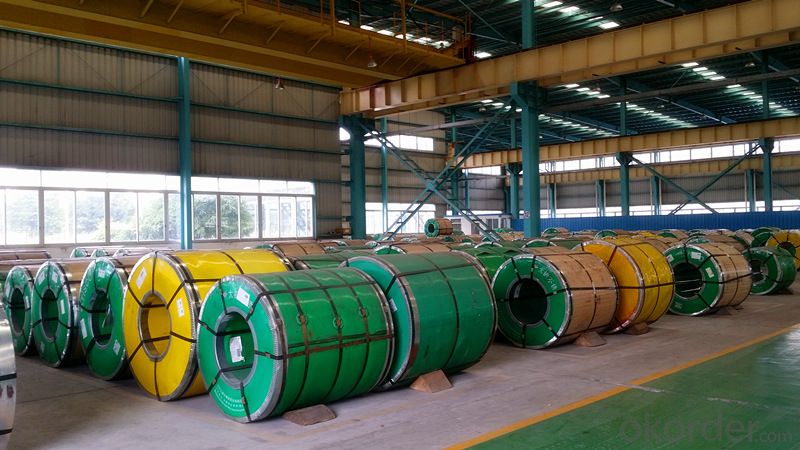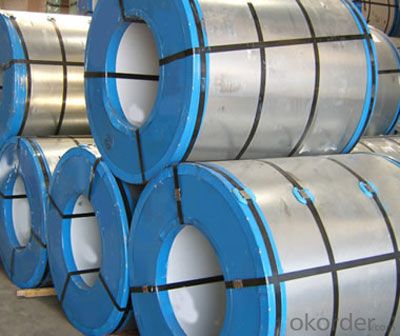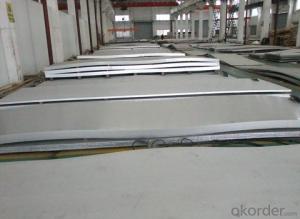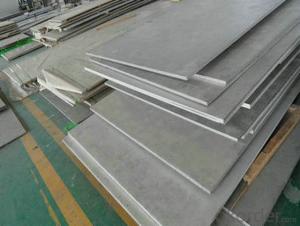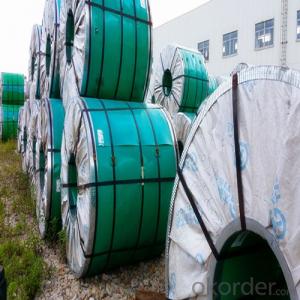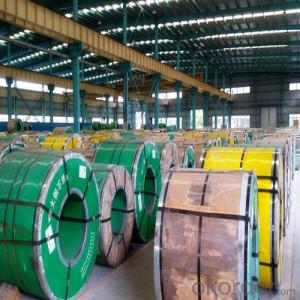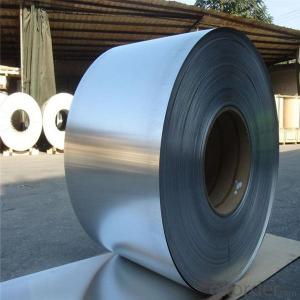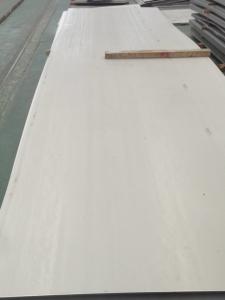Hot Rolled Stainless Steel Coil 403 2B/BA
- Loading Port:
- Tianjin
- Payment Terms:
- TT OR LC
- Min Order Qty:
- 100 m.t.
- Supply Capability:
- 10000 m.t./month
OKorder Service Pledge
OKorder Financial Service
You Might Also Like
1.Structure of Stainless Steel Coil:
Stainless steel coil is a production which not easy rust, acid resistance and corrosion resistance, Stainless steel coil is a new kind of Austenite stainless steel by used Mn, N replace Ni. so it is widely used in light industry, heavy industry, daily necessities and the decoration industry. Stainless steel coil has good corrosion resistance and hot / cold processing performance, instead of stainless steel products for used in the not high of corrosive environment, such as indoor, inland city outdoor etc.
2.Main Features of the Stainless steel coil:
1) High Quality: Using Latest automated control equipment to ensure the quality
2) Best Price: With most automated equipments to ensure our price is lower than the market
3) Fast Delivery: The delivery date within 20 das after get your order
4) Best Service: Our after-sell service team will help you to slove all the problems about the order
3. Stainless steel coil Images
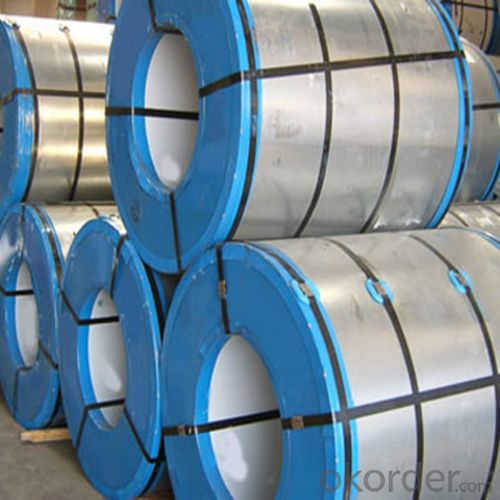

4. Stainless steel coil Specification
Product name: 304 Stainless Steel Coil
Thickness: 0.2mm to 1.5mm
Technical: Cold Rolled
Width: 10mm to 1240mm
Type: 200 Series
Length: As customer's requested
Standard: JIS, SUS
Finish: BA, 2B, 8K, NO.3, NO.4, HL
MOQ: 100 MT
Ship Term: FOB Shenzhen port or CNF import port
Delivery Time: 15 to 20 day after the receive the deposit or LC
Packaging: By wooden pallet, wooden case or according to customer's request
5.FAQ
1) How about your company?
2) A world class manufacturer & supplier of castings forging in carbon steel and alloy steel,is one of the large-scale professional investment casting production bases in China,consisting of both casting foundry forging and machining factory. Annually more than 8000 tons Precision casting and forging parts are exported to markets in Europe,America and Japan. OEM casting and forging service available according to customer’s requirements.
3) How to guarantee the quality of the products?
4) We have established the international advanced quality management system,every link from raw material to final product we have strict quality test;We resolutely put an end to unqualified products flowing into the market. At the same time, we will provide necessary follow-up service assurance.
- Q: Do stainless steel sheets have a warranty?
- Yes, stainless steel sheets generally come with a warranty. The duration and terms of the warranty may vary depending on the manufacturer and the specific product. It is always recommended to check with the supplier or manufacturer for the details of the warranty coverage. Typically, the warranty covers defects in material or workmanship and provides a replacement or repair of the stainless steel sheet if any issues arise within the specified warranty period. It is important to follow the manufacturer's care and maintenance instructions to ensure the validity of the warranty.
- Q: What are the color options for stainless steel sheets?
- Stainless steel sheets generally come in a variety of color options, depending on the specific type of finish applied to the surface. The most common color options for stainless steel sheets include silver, which is the natural color of stainless steel, as well as black, gold, bronze, and copper. These colors are achieved through processes such as powder coating, PVD coating, or chemical treatments, which create a thin layer on the surface of the stainless steel sheet. The color options allow for greater versatility in design and can be chosen to complement different aesthetics and applications.
- Q: Can stainless steel sheets be used for fire-rated applications?
- Indeed, fire-rated applications can utilize stainless steel sheets. Renowned for its elevated melting point and exceptional heat resistance properties, stainless steel maintains its robustness and integrity even under extreme temperatures. Consequently, it serves as a fitting material for fire-rated applications. Commonly employed in fire-rated doors, walls, and ceilings, stainless steel sheets furnish a resilient and dependable barrier against fire. Moreover, the corrosion resistance qualities of stainless steel guarantee its longevity, thereby ensuring its continued efficacy in fire-rated applications.
- Q: How do you bend stainless steel sheets?
- Bending stainless steel sheets requires a combination of skill, knowledge, and the right tools. Here are the steps to bend stainless steel sheets effectively: 1. Determine the type of stainless steel you are working with: Stainless steel comes in different grades, each with its own unique characteristics. Knowing the specific grade of stainless steel will help you understand its malleability and how it responds to bending. 2. Prepare the stainless steel sheet: Before you begin bending, make sure the stainless steel sheet is clean and free of any dirt or debris. You can use a mild detergent and a soft cloth to clean the surface. 3. Mark the bending line: Measure and mark the exact spot where you want to bend the stainless steel sheet. Use a ruler or a straight edge to ensure a precise and straight line. 4. Use a suitable bending tool: There are various bending tools available for stainless steel sheets, such as a press brake, a rolling machine, or a bending machine. Choose the appropriate tool based on the thickness and size of the stainless steel sheet. 5. Apply pressure gradually: Place the stainless steel sheet into the bending tool, ensuring that it aligns with the marked bending line. Start applying pressure gradually, working your way from one end to the other. Avoid applying excessive force too quickly, as it can cause the sheet to crack or deform. 6. Adjust the bending angle: Depending on the desired angle of the bend, you may need to adjust the position of the stainless steel sheet within the bending tool. Use the tool's adjustments or additional tools like clamps to achieve the desired angle accurately. 7. Check the result: Once you have completed the bending process, carefully remove the stainless steel sheet from the bending tool. Inspect the bend for any defects, cracks, or unevenness. If necessary, you can use a rubber mallet or a hammer with a soft face to make minor adjustments. Remember, bending stainless steel sheets requires practice and precision. It is advisable to start with smaller projects and gradually work your way up to more complex bends. If you are unsure or lack experience, consulting a professional in metal fabrication is always a good idea to ensure the best results.
- Q: Can stainless steel sheets be used for kitchen sinks?
- Kitchen sinks can indeed be manufactured using stainless steel sheets. This material is highly favored for its robustness, ability to withstand corrosion, and low maintenance requirements. The versatility of stainless steel sheets enables them to be shaped into different forms and dimensions, commonly employed in the production of kitchen sinks. Moreover, the smooth surface of stainless steel allows for effortless cleaning and ensures a hygienic environment in the kitchen. Furthermore, stainless steel sheets exhibit remarkable resistance to heat, stains, and scratches, rendering them an ideal selection for a kitchen sink exposed to daily usage and potential damage.
- Q: Can stainless steel sheets be used in food processing industries?
- Stainless steel sheets find extensive use in the food processing industry due to their versatility. They possess exceptional resistance against corrosion, rendering them perfect for environments involved in food processing, storage, or handling. Moreover, their hygienic nature facilitates easy cleaning and prevents any unwanted reactions with the food, ensuring the preservation of its quality and safety. These sheets are employed for crafting an array of food-oriented surfaces, including preparation areas, workstations, counters, sinks, shelves, storage tanks, as well as essential equipment like mixers, conveyors, and ovens. Furthermore, their durability and ability to withstand high temperatures make them an excellent choice for a broad spectrum of food processing operations.
- Q: What are the benefits of using embossed stainless steel sheets in elevator doors?
- Embossed stainless steel sheets offer several benefits for elevator doors. Firstly, the embossed pattern adds a touch of elegance and sophistication, enhancing the overall aesthetic appeal of the elevator. Additionally, the embossed texture helps to improve grip and prevent slipping, ensuring safety for passengers. Furthermore, stainless steel is highly durable and resistant to corrosion, making it an ideal material for elevator doors that are subject to constant use and exposure to various environmental factors. Lastly, stainless steel sheets are easy to clean and maintain, saving time and effort in the long run.
- Q: Can stainless steel sheets be used for food preparation surfaces?
- Yes, stainless steel sheets can be used for food preparation surfaces. Stainless steel is a popular choice for food preparation surfaces due to its excellent properties. It is non-porous, which means it does not absorb any liquids or bacteria that can contaminate the food. Stainless steel is also resistant to corrosion, staining, and rusting, making it a durable and long-lasting option for food preparation surfaces. Additionally, stainless steel is easy to clean, as it can withstand high temperatures and is not affected by most cleaning agents. This makes it a hygienic choice for food preparation surfaces, as it can be thoroughly sanitized to prevent the growth of bacteria. Overall, stainless steel sheets are a safe and practical choice for food preparation surfaces.
- Q: Can stainless steel sheets be used for countertops or backsplashes?
- Certainly! Countertops and backsplashes can indeed be made from stainless steel sheets. This material is highly durable and can resist stains, heat, and bacteria, which makes it an exceptional option for kitchen surfaces. It is simple to clean, maintains its appearance throughout time, and can endure heavy usage. Not only are stainless steel countertops and backsplashes widely used in commercial kitchens because of their hygienic qualities, but they are also gaining popularity in residential settings due to their stylish and contemporary appearance.
- Q: What are the different types of surface finishes available for stainless steel sheets?
- There are several types of surface finishes available for stainless steel sheets, each with its own unique characteristics and applications. 1. No. 1 Finish: This is the most common and widely used finish for stainless steel sheets. It is hot rolled and annealed, resulting in a rough, dull appearance with visible grain lines. No. 1 finish is suitable for applications where a rough surface texture is desired, such as industrial or structural uses. 2. No. 2B Finish: This finish is achieved by cold rolling the stainless steel sheet after a No. 1 finish, followed by annealing and descaling. It has a smooth, reflective surface with a slight matte appearance. No. 2B finish is commonly used for applications requiring a clean, aesthetic look, such as kitchen appliances, architectural accents, and decorative items. 3. No. 3 Finish: Also known as a brushed finish, this type of surface finish is achieved by mechanically polishing the stainless steel sheet with abrasive materials. It creates a unidirectional pattern of fine lines, giving the metal a satin-like appearance. No. 3 finish is often used for decorative purposes, such as furniture, signage, and elevator doors. 4. No. 4 Finish: Similar to No. 3 finish, No. 4 finish is achieved by mechanically polishing the stainless steel sheet, but with finer abrasives. It produces a smoother, more refined surface with a low gloss. No. 4 finish is commonly used for applications requiring good corrosion resistance and easy maintenance, such as kitchen equipment, automotive trim, and architectural components. 5. No. 8 Mirror Finish: This is the most reflective and luxurious surface finish for stainless steel sheets. It involves polishing the metal with progressively finer abrasives until a highly reflective mirror-like surface is achieved. No. 8 mirror finish is often used for decorative and high-end applications, such as architectural accents, jewelry, and luxury consumer goods. 6. Embossed Finish: This finish involves stamping or pressing a pattern onto the stainless steel sheet, creating a textured surface. Embossed finishes can vary from simple designs to intricate patterns, offering both aesthetic appeal and improved slip resistance. They are commonly used for applications requiring both functionality and visual interest, such as flooring, countertops, and wall cladding. Overall, the choice of surface finish for stainless steel sheets depends on the desired appearance, functionality, and performance requirements of the specific application.
Send your message to us
Hot Rolled Stainless Steel Coil 403 2B/BA
- Loading Port:
- Tianjin
- Payment Terms:
- TT OR LC
- Min Order Qty:
- 100 m.t.
- Supply Capability:
- 10000 m.t./month
OKorder Service Pledge
OKorder Financial Service
Similar products
Hot products
Hot Searches
Related keywords



